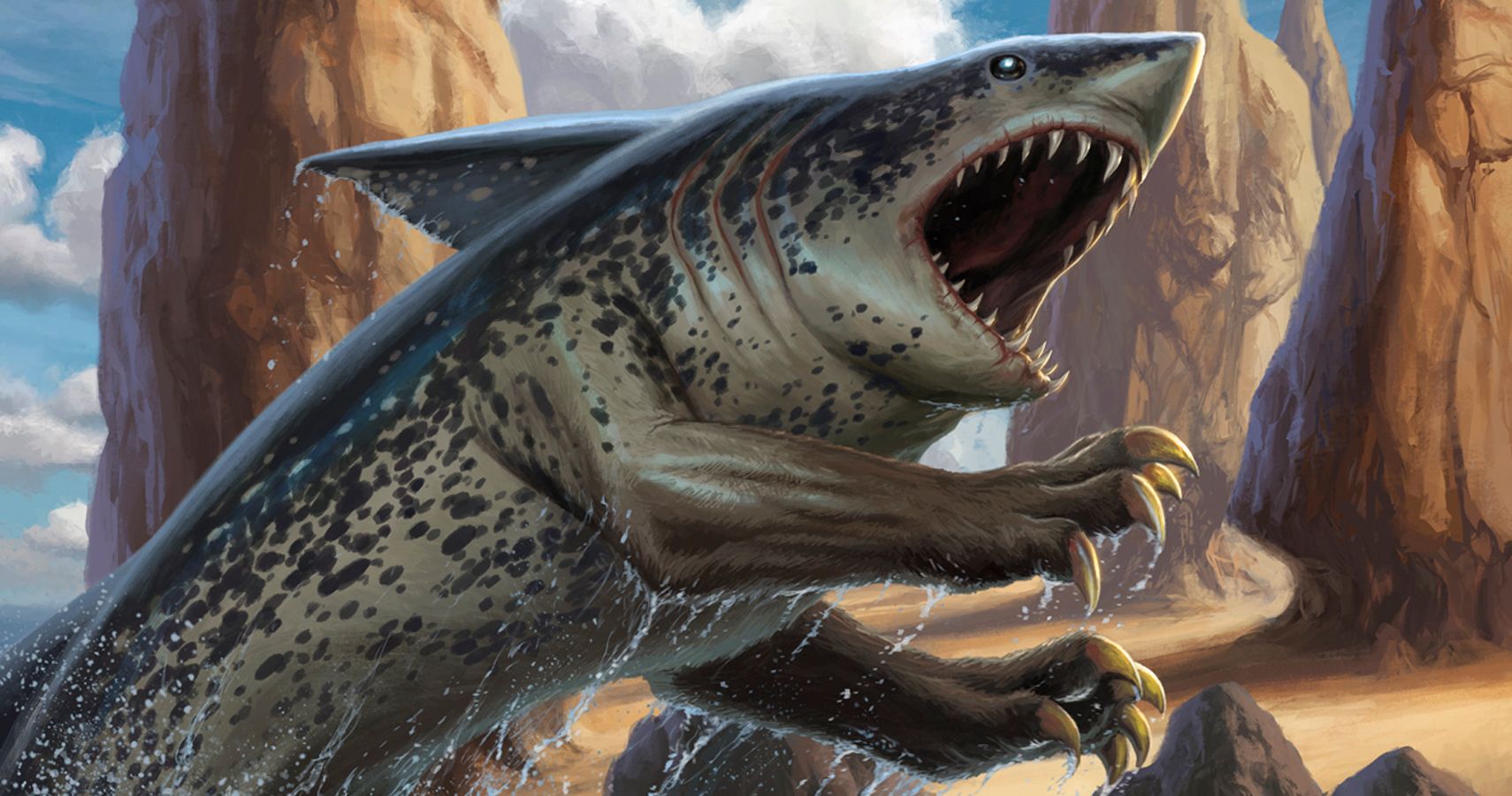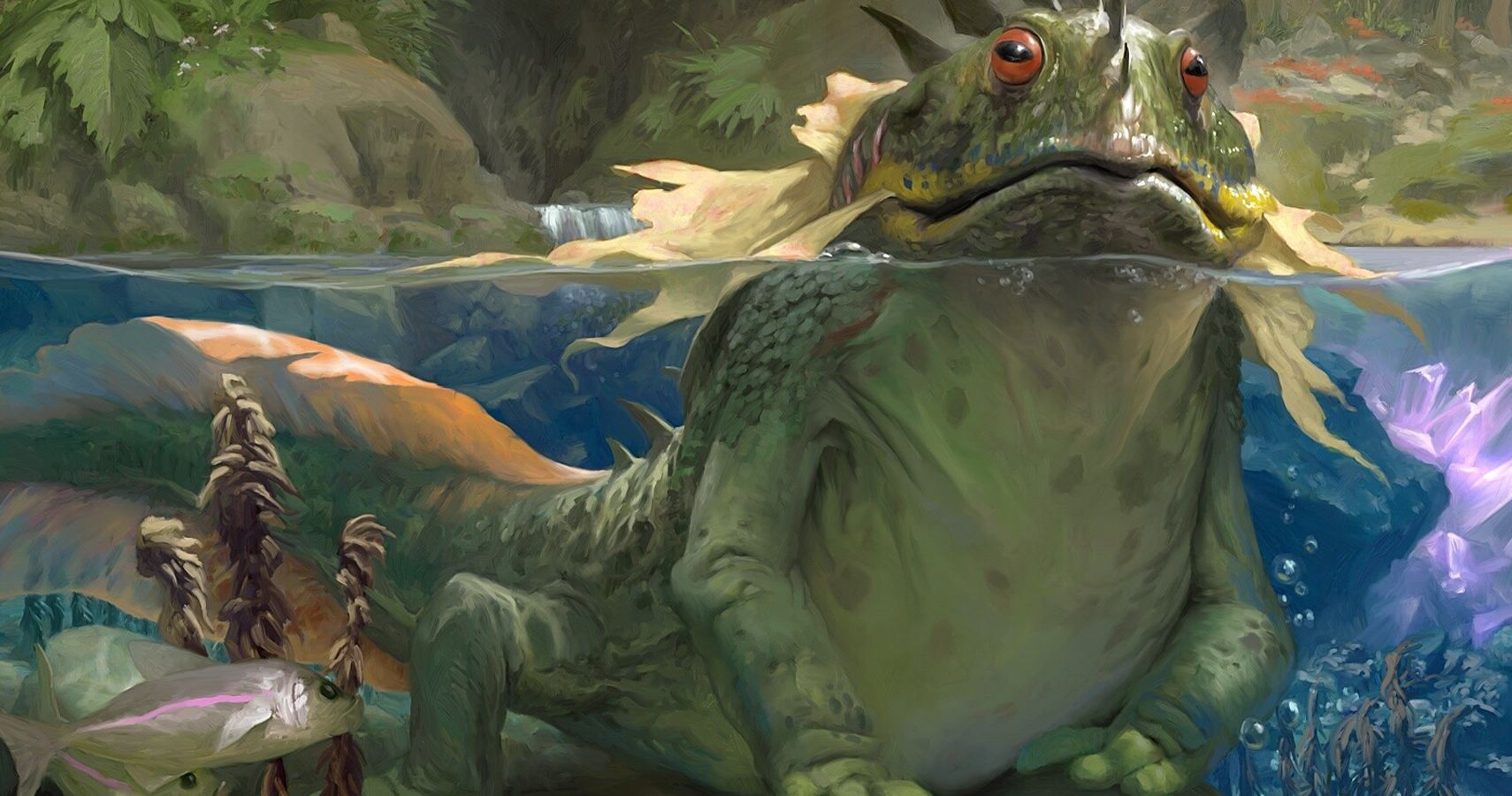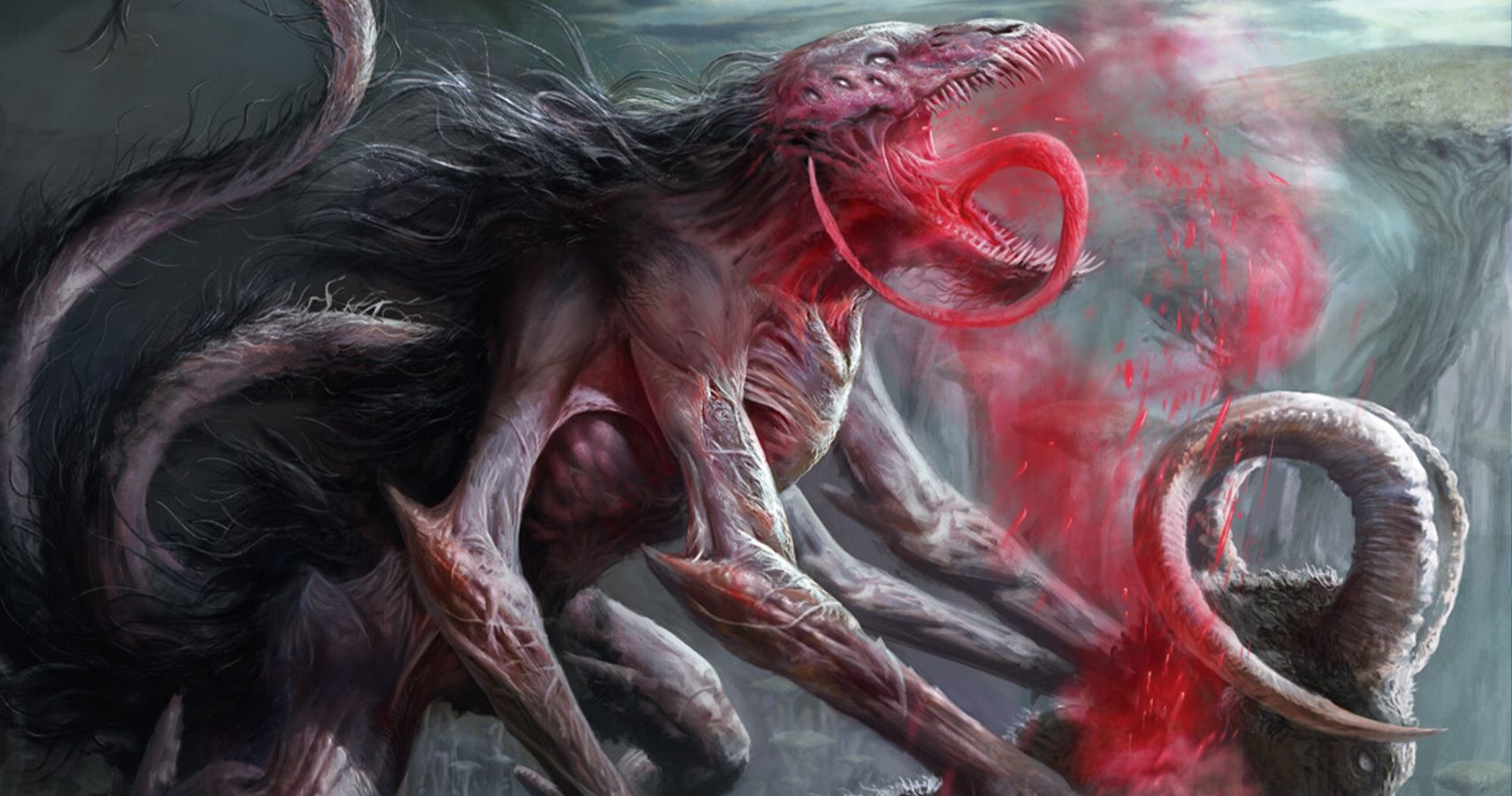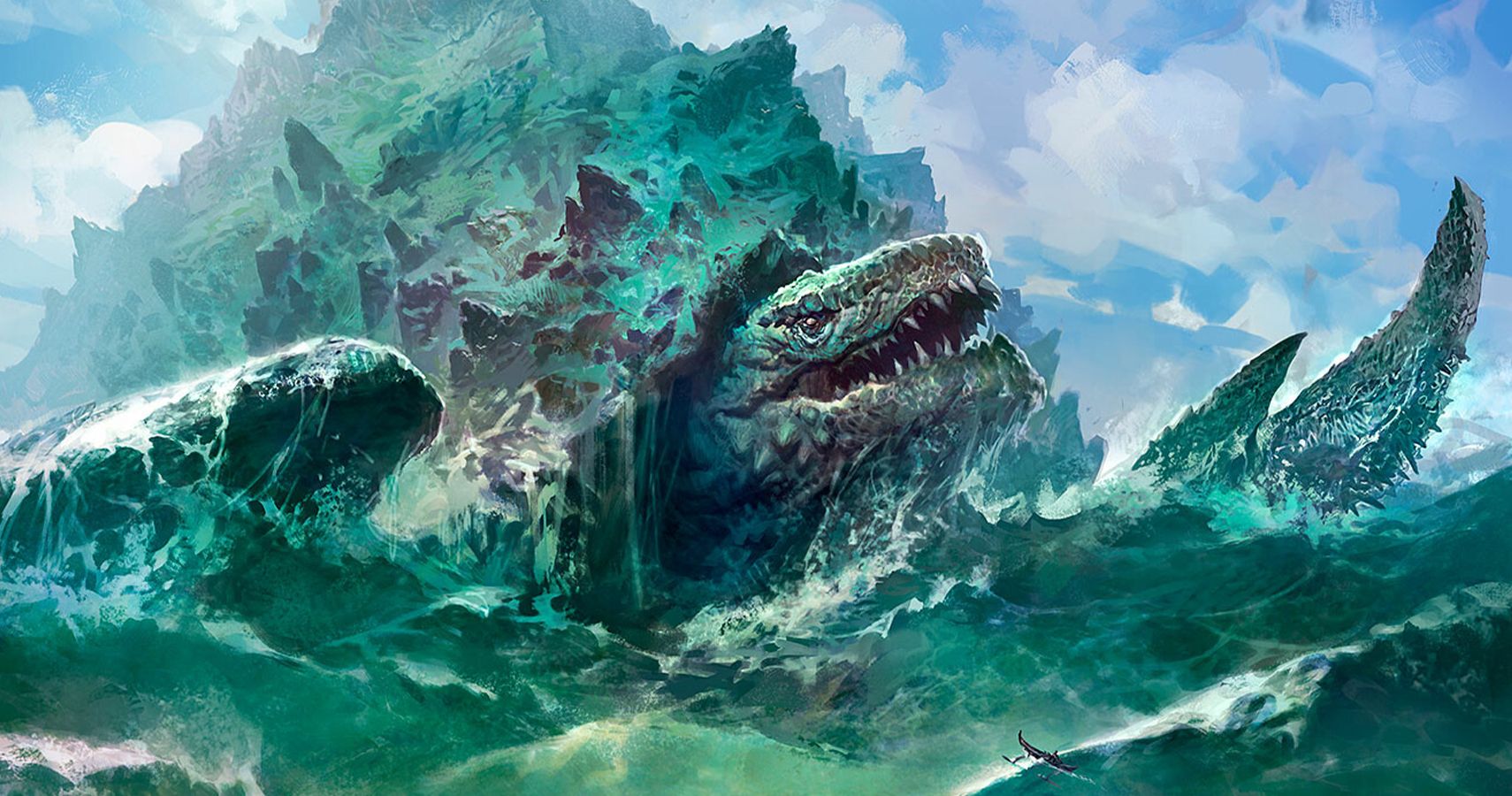Magic The Gathering: What Is Mutate?
Table of Contents
Here’s everything you need to know about one of the game’s coolest, but most confusing, mechanics.
You Are Reading :Magic The Gathering What Is Mutate

In Magic the Gathering’s plane of Ikoria, something is happening to the local wildlife. Out of nowhere, creatures are transforming, being warped by mysterious crystals into new and dangerous monsters. The humans of Ikoria, tucked away in their enclaves of Drannith and Skysail, don’t understand why this is happening, and are purely focused on survival over studying these rampant mutations.
This volatility of Ikoria’s creatures is represented in the Mutate mechanic. It’s a mechanic that can build up to some explosive turns, but can be tricky for newcomers to understand.
What Is Mutate?

Mutate is a keyword ability found on certain creatures in Ikoria: Lair of Behemoths. It’s an alternative casting cost that, one paid, allows you to essentially give a non-human creature on the battlefield the traits of the mutate creature you’ve cast.
When mutating, you have the choice to either mutate on top or underneath the target creature you’re mutating on to. If you mutate on top, the result is the creature inherits the name, colour, power, and toughness of the mutate creature you cast, while if you mutate onto the bottom, it maintains the previous creature’s instead.
While name, creature type, power, toughness, and colour of a “merged” mutated creature are all defined by the card on top, abilities (the bit in the main text box) are inherited from every mutated part of the creature. For example, say you have a non-human creature like Glimmerbell already out on the battlefield, and you’ve just drawn a Cubwarden. By paying Cubwarden’s mutate cost of two generic and two white, you can mutate the Glimmerbell with the Cubwarden.
If you mutate underneath, the resulting creature will still be a 1/3 blue Glimmerbell with Flying, and the ability to pay one generic and one blue to untap it. However, it will also inherit Cubwarden’s Lifelink and mutate trigger. If you mutate the other way and put Cubwarden on top, the result will be a 3/5 white Cubwarden with Lifelink and the mutate trigger, and it will inherit the flying and untap ability from Glimmerbell.
More than just grafting some abilities onto a creature, the real beauty of Mutate is that most creatures with it have abilities that trigger when the mutation happens. Using the Glimmerbell and Cubwarden example, when you mutate Cubwarden onto or under Glimmerbell, the ability will trigger and you’ll make two 1/1 white cat creature tokens with lifelink. You then repeat that effect every time it mutates further – mutate a Dreamtail Heron onto it later on, and you’ll make two more tokens and draw a card. Mutate after that with a Migratory Greathorn, and you’ll make two tokens, draw a card, and search your library for a land. Mutate is a snowball of triggers, encouraging you to keep on building up a creature with more and more merged parts.
With such a complicated mechanic, there are a few weird rules to keep in mind. First, because Ikoria is a set all about the conflict between humans and monsters, you can’t mutate onto a Human creature. Only non-Human creatures are valid mutation recipients.
Secondly, a mutated creature is considered one individual creature with all the abilities of every creature it has merged with. That means, if the creature dies, it only counts as one creature dying – the constituent creatures it has merged with are merely put into the graveyard along with it. On the other hand, if it is exiled, all the parts separate – if it’s an effect that exiles and returns to the battlefield, like Flicker of Fate, all the parts come back as their own, individual creatures.
Any ability that relies on naming itself – such as Glimmerbell’s ability saying “Untap Glimmerbell” – is renamed to whatever the top of the merged creature is called. That means Glimmerbell’s ability would rename to “Untap Cubwarden” if Cubwarden is mutated on top.
How To Use Mutate

Mutate is at its most powerful when you really commit to it by going all-in on one creature. Building up a massive, merged creature that does a dozen other things whenever it mutates can easily lock your opponent out of the game, flood the board with more permanents, or simply grow big enough to smash with damage.
There are two non-mutating creatures who care about the mechanic: Polywog Symbiot and Essence Symbiote. Pollywog reduces the cost of a creature if it has mutate by one (including the mutate cost), and lets you rummage for a card whenever you cast a creature with mutate. Essence Symbiote, on the other hand, gives you life and puts a +1/+1 counter on a creature whenever it mutates.
From there, it’s simply a matter of building up those triggers. Particularly powerful Mutate creatures are Archipelagore, which can tap down an opponent’s entire battlefield, Pouncing Shoreshark to bounce creatures back to their controller’s hand, and Auspicious Starrix to cheat out lots of other permanents for free.
The downside of Mutate is it encourages you to put all your eggs in one basket. A creature with Mutate is incredibly vulnerable to targeted removal or forced sacrifice, and it being destroyed can frequently leave you completely open. It’s worth using some artifacts like Swiftfoot Boots or Mirror Shield to protect from targeted removal, and use Trumpeting Gnarr to make more creature tokens for you to sacrifice if you’re forced into it. If all else fails, Boneyard Lurker is a mutate creature that can return other mutate creatures from your graveyard to your hand.
What Colour Is Mutate?

Mutate is Ikoria: Lair of Behemoths’ central mechanic, and so it gets representation in all five colours. However, it does tend towards the Sultai colours of blue, black, and green.
Of the 37 cards that either has the mutate ability or mention it, there are only four white, six blue, six black, three red, and six green cards. There is also one silver-bordered green Mutate card, Surgeon General Commander. While it introduced the Mutate mechanic to the game before Ikoria, it isn’t legal in the vast majority of formats and so isn’t being counted here.
There are a handful of two-coloured creatures with Mutate, too. One Orzhov (black/white), one Izzet (blue/red), one Golgari (black/green), one Boros (red/white), and two Simic (green/blue).
Ikoria is a three-colour-matters set, though, and so there are some wedge creatures too. Two Sultai (blue/black/green), one Mardu (white/black/red), one Temur (blue/red/green), one Abzan (white/black/green), and one Jeskai (white/blue/red).
Finally, there is one colourless, Mysterious Egg.
Link Source : https://www.thegamer.com/magic-the-gathering-mtg-mutate-explained/
